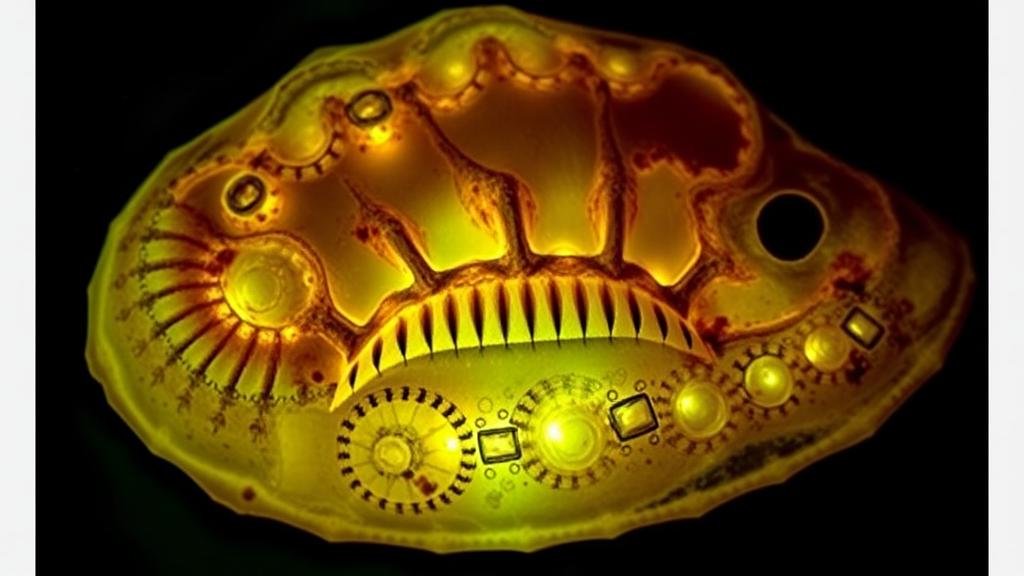The Glow of Bioluminescent Fossils: Unveiling Nature’s Ancient Light
The Glow of Bioluminescent Fossils: Unveiling Nature’s Ancient Light
Bioluminescent fossils represent a fascinating intersection of geology, biology, and paleontology, offering rockhounds and mineral collectors an extraordinary glimpse into the past. Fossils that exhibit bioluminescence not only capture the imagination but also raise intriguing questions about the environments in which these organisms existed. This article explores the nature of bioluminescence, identifies notable examples of bioluminescent fossils, discusses their formation processes, and provides practical tips for collectors.Â
Understanding Bioluminescence
Bioluminescence is the natural phenomenon where living organisms emit light through biochemical reactions. This light emission typically results from the interaction of a light-emitting molecule called luciferin with an enzyme called luciferase. According to the National Center for Biotechnology Information, around 76% of all known bioluminescent organisms are found in the ocean, including species such as squid, jellyfish, and certain types of plankton.
- Example Organisms: Common bioluminescent organisms include the firefly, which produces a warm yellow-green light, and the deep-sea anglerfish, utilizing bioluminescence to attract prey in the dark waters.
- Scientific Data: It is estimated that bioluminescent organisms can produce light in wavelengths between 450 to 650 nanometers, depending on the specific species and environmental context.
Notable Examples of Bioluminescent Fossils
While many bioluminescent organisms are modern, certain fossils have shown evidence of past luminescence. Notable examples include:
- Dinosaurs and Other Megafauna: Fossils of certain prehistoric plankton-like organisms, which include coccolithophores, have been found to exhibit bioluminescent properties, suggesting these organisms played a vital role in ancient marine ecosystems.
- Fossilized Wood: Fossilized trees, particularly of the genus Araucaria, have shown luminescent qualities when exposed to UV light, raising questions about their ecological functions in ancient climates.
Examples of luminescent minerals include various types of fluorite and calcite crystals that may exhibit phosphorescence or fluorescence, leading to a vibrant glow under UV light, although these processes differ from biological bioluminescence.
The Formation of Bioluminescent Fossils
Bioluminescent fossils are typically formed under specific conditions that facilitate the preservation of original organic material. Key aspects of fossilization include:
- Rapid Burial: Quick sedimentation protects organic remains from decay, allowing for mineralization processes to retain bioluminescent properties.
- Environmental Conditions: Anoxic (low oxygen) environments, such as deep ocean floors or shallow lagoons, promote the preservation of organic compounds necessary for luminescence.
The preservation of bioluminescent properties in fossils serves as a time capsule, providing insights into past biological processes and ecologies that are often invisible to modern observations.
Collecting Bioluminescent Fossils
For rockhounds and mineral collectors, the allure of bioluminescent fossils can enhance a collections significance. Here are some practical tips:
- Educate Yourself: Familiarize yourself with the taxonomy of bioluminescent organisms and the types of fossils that may exhibit luminescence. Resources such as scientific journals and textbooks on paleontology are invaluable.
- Use UV Light: Invest in a quality UV flashlight to test specimens for luminescence. Many minerals and fossils will fluoresce under ultraviolet light, enhancing their visual appeal.
- Join Collecting Groups: Engage in community clubs or online forums where collectors share tips and their experiences, as collaborative learning can introduce you to valuable insights and resources.
- Attend Fossil Shows: Participate in local and national fossil shows to discover unique finds and connect with other enthusiasts, while also having the chance to appreciate specimens in person.
Potential Questions and Considerations
While exploring bioluminescent fossils can be thrilling, there are several considerations to keep in mind:
- Legal and Ethical Collecting: Always ensure that your collecting practices abide by local laws and regulations regarding fossil retrieval. Ethics in collecting is paramount in preserving natural heritage.
- Environmental Impact: Be conscious of the environments from which you are collecting. Over-collecting in sensitive areas can lead to ecological ramifications.
Conclusion
The exploration of bioluminescent fossils not only enriches the knowledge of ancient life but also captivates the hearts of those who appreciate the intricate beauty of nature. For collectors, the pursuit of these luminous relics can lead to remarkable discoveries and an appreciation for the complex history of our planet. By educating oneself, practicing ethical collecting, and engaging with the rockhounding community, enthusiasts can experience the wonder of bioluminescence as a unique facet of fossil collecting.


